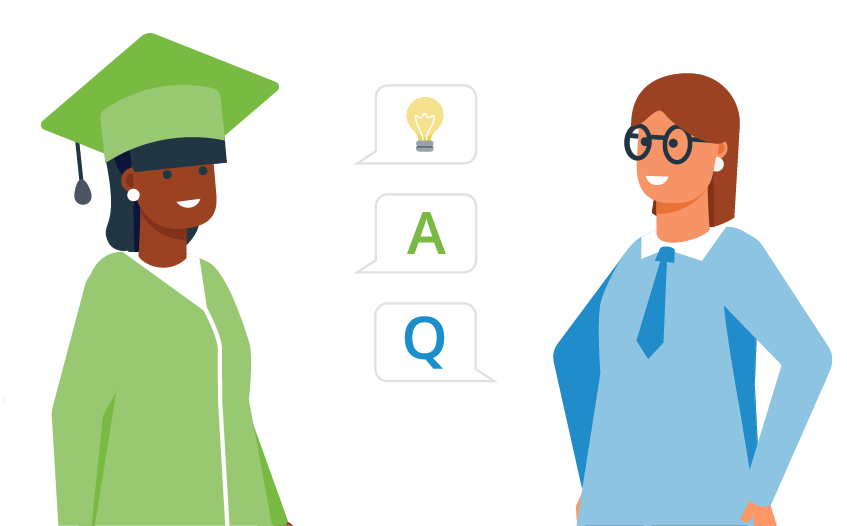It will come as no surprise that questions are used in learning to clarify understanding and assess knowledge. But questions can do so much more and are an incredibly valuable part of the learning experience. Questions can help direct learning, increase motivation and interest, diagnose learner abilities, attitudes, and preferences, stimulate creative thinking, and help learners monitor their own understanding and self-evaluate their progress.
The challenge for learning designers is to plan questions strategically so that learners can obtain a deeper level of understanding and achieve learning transfer.
What is learning transfer and why is it important?
Learning transfer is when the learner can successfully apply the knowledge, skills, information, strategies, or behaviour acquired during a learning event to a new situation, context, or job. At the end of the day, we want learning to be meaningful, memorable, and transferable. Otherwise, it is more likely that the learning will be forgotten.
How can we help the learner apply what they have learnt?
Questions can have a big impact on learning transfer and higher order questions are key. They tend to be more challenging, can be more advantageous, and can foster a deeper understanding of the content. However, higher order questions are not used as frequently as they are harder to formulate and require careful planning.
Importantly, we want the learner to feel successful and capable and not as though they’ve been thrown in the deep end. ‘Staging’ questions can help in this regard by gradually increasing the level of challenge.
What is the difference between higher and lower order questions in eLearning?
In a nutshell, lower order or factual recall questions tend to be closed, with a single right answer, and are likely to be a question starting with ‘what’, ‘who’, ‘when’, or ‘where’. Higher order questions tend to be more open, offer a range of possibilities, and are likely to start with ‘how’, ‘why’, or ‘which’.
This is not to say that lower order questions aren’t valuable. They have an important part to play in assessing knowledge, consolidating information, and are useful when you need to revise key concepts before learning new content quickly. However, research suggests that learners often experience too many of these basic recall questions and not enough thought-provoking, higher order questions.
How can I improve my questions?
The best way to improve your questions is to reflect on your own work and create a list of the types of questions you’ve used. Do you tend to favour one question type over another? Are you mostly asking ‘what’ and ‘who’ questions, rather than ‘how’ or ‘why’? Are you planning your higher order questions strategically in the learning experience? Do you plan questions that allow for the transfer of learning? Could you improve your questions by gradually increasing the level of challenge?
Identify the strengths and weaknesses of your questioning style and then keep the following in mind when you create future questions:
-
Plan your questions, use them to provide structure and direction in the learning
-
Make questions succinct and clear
-
Ask questions logically and sequentially
-
Ask questions at various levels, both higher and lower order questions.

.png)

